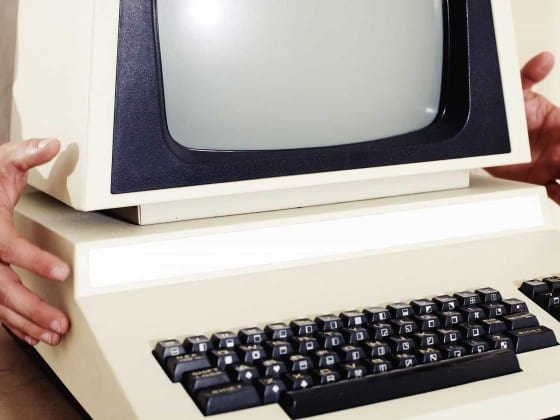

The Best Cryptocurrency Tools are the Ones You Use
How you use cryptocurrencies will help you determine how far the rabbit hole you’ll need to go –as in which are the best cryptocurrency tools you’ll need for your day-to-day activities.
This article is to help you figure out which are the best cryptocurrency tools for your unique situation, based on what you’re trying to do with them.
Free Online Cryptocurrency Course
Learn about cryptocurrency at your own pace! We took a more conversational approach to explaining cryptocurrency, pointing out tools and resources as we go along, in context of real-world situations.The articles below are listed in the order of our own learning experience, moving through the different layers of cryptocurrency adoption from understanding criticisms and myths to the wide range of technologies that underpin it.
We've continuously updated and expanded on each article over time to ensure relevance. The last content review was February, 2020.
What Do You Want to Use Cryptocurrency For?
The accounts, systems, or technologies you’ll need to familiarise yourself with depend on what you’re trying to accomplish with cryptocurrency.
We’ve shared all of the best cryptocurrency tools that we trust below, organised by what you’re trying to do with your coins.
1. Buy and Hold
If you’re simply looking to buy and hold cryptocurrency as a way to make financial gains over the long-term, you will need a way to obtain it and then to store it.
If you are buying cryptocurrencies with FIAT cash, you will need a verified account with an exchange in your country that will be able to accept FIAT funds from a bank account and/or debit card. In Canada, we use Quadriga CX, Coinbase is popular in the United States, and Binance is popular internationally.
If you prefer to obtain cryptocurrencies with some level of anonymity, it is possible to buy and sell it outside of an exchange –which means you will not need to associate your real-world identity to your public key by verifying your address or other personal details.
LocalBitcoins is one such online marketplace where you can meet with other individuals to sell or buy cryptocurrency instantly, in the real world, without relying on an exchange to do so.
Once you have purchased your cryptocurrency you will need to store it, in which case we suggest a hardware wallet like Trezor or a Ledger Nano S. Often, cryptocurrency buyers and sellers will facilitate in-person cryptocurrency transfers using a temporary intermediary mobile wallet and then transfer it to their long-term cryptocurrency storage solution afterwards.
The security of online cryptocurrency exchanges, online wallets ledand the computer that a software wallet may run on can be compromised over time. Computers and mobile devices are prone to malware or silent rooting, and exchanges are occasionally victims of DDOS attacks or insider hacks.
For long-term cryptocurrency storage an offline hardware wallet is a must –this is called “cold storage”, whereas an internet-connected wallet is called “hot storage”.
Related: 10 Bitcoin Myths, Scams, and Criticisms Explained
2. Buy, Sell, Trade or Lend
If you’d like to lend, buy or trade cryptocurrencies, you’ll need to have an account on a cryptocurrency exchange in addition to a wallet. As of the time of writing this article (updated March, 2018), the most popular exchanges are Binance, Coinbase, Bittrex, Gemini, Poloniex, and LedgerX — the latter of which is ”the first US federally-regulated exchange and clearinghouse for derivatives contracts settling in digital currencies” and Gemini is working on being regulated as well.
Additionally, I suggest cryptocurrency traders learn how to analyze the market with tools like TradingView or Coinigy and set alerts with Blockfolio.
In order to create a small profit with your cryptocurrencies, it is also possible to lend them on popular exchanges like Bitfinex.
3. Pay for Goods and Services
In my opinion, the use case for crypto has changed over the years since the early days of Bitcoin. Once heralded as a cheap or free way (as in, no fees) to make purchases online or in the real world, I think this is changing.
I personally believe the best way to use Bitcoin or other altcoins is for buying and holding, lending, or trading –and you should always consider putting some of your profits away to buy gold or silver (you never know). With the value of cryptocurrencies fluctuating while they reach maturity as a globally recognized currency, their FIAT value can change wildly in the time it takes you to read this sentence.
If you spend them today at their current FIAT value, that same amount may be worth dramatically more in just a few weeks.
Nobody wants to be that guy who bought two pizzas with 10,000 Bitcoin only to discover years later his 10,000 Bitcoin would now be worth about 20 million USD. When he bought those pizzas back in 2010, his 10,000 Bitcoin were only worth about $40 USD.
Cashing out your cryptocurrency may be ideal for profits now and again, but I wouldn’t recommend pulling out your nest egg for a cup of coffee.
Now, that’s one hell of a disclaimer.
However, if you’d still like to make direct purchases using cryptocurrency it is possible to do so with services that have a debit card like BitPay, Payzaa, or you can pay your employees (or virtual assistants) with BitWage. At this time, there is no way to use PayPal to spend Bitcoin or any other cryptocurrency. Here in the Philippines, I love using Coins.ph which also has a subsidiary in Thailand.
Most mobile wallets also come with a QR code scanner, which you can scan and pay for goods and services where supported –no debit card required.
From algorithmic trading and Decentralized Finance to navigating the US tax system with cryptocurrency investments, Ivan on Tech has you covered.
Take a CourseWhat do you think?
What are your best recommended cryptocurrency tools? How do you most commonly use cryptocurrencies and why do you choose them over FIAT currency? Tell us about your experiences using cryptocurrency in the comments below.






